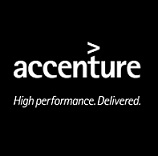Comcast Diversifies With .8 Billion DreamWorks Acquisition
DAILY VIDEO: Comcast buying DreamWorks Animation for $3.8B as it expands its reach; Microsoft adds Nano server option to Windows Server 2016; Yammer crosses organization borders with external groups feature; and there’s more.
Today’s topics include Comcast’s acquisition of DreamWorks Animation, the addition of a nano server option to Windows Server 2016, new extensions to Yammer’s team collaboration capabilities and Yahoo’s decision to allow activists members to join its board of directors.
Comcast is acquiring DreamWorks Animation for $3.8 billion as the cable television service continues to diversify by adding complementary businesses as the future of cable television remains unfocused.
The deal, which was announced April 28, brings together Comcast with the powerful DreamWorks film producer, which has produced a wide range of popular animated features, including Shrek, Madagascar and Kung Fu Panda.
The merger brings huge opportunities for content streaming to Comcast, which like other cable companies, is seeing its business impacted by customers who are replacing their cable connections with streaming video and original programming from services such as Hulu, Netflix and Amazon Prime.
Microsoft released Windows Server 2016 Technical Preview 5 on April 27, a test build that includes what its dubbed the Nano Server as an installation option.
First announced a year ago, Nano Server is a container- and cloud-friendly version of Windows Server that dispenses with the GUI, 32-bit support and other software components that compete for CPU cycles.
This week, Microsoft has incorporated Nano Server as a deployment option on both the Standard and Datacenter editions of Windows Server 2016 Technical Preview 5.
To help administrators keep a closer eye on their Nano Servers, along with Windows Server 2016’s new data center modernization features, Microsoft also announced the release of System Center 2016 Technical Preview 5.
Yammer is branching out by allowing users to bring their colleagues at other companies into team collaboration sessions.
The new External Groups feature, launched yesterday, builds on Yammer’s existing external contacts and networks functionality to extend team collaboration to colleagues that may be on the same project, but draw a paycheck from different employers.
“Office 365 customers can now create external Yammer groups for seamless and secure collaboration across company and organizational boundaries,” said Kirk Koenigsbauer, corporate vice president of Microsoft Office 365 Client Applications, in an April 26 announcement.
Yahoo, facing rising unrest from number of dissatisfied investors, revealed April 27 that it has decided to diffuse a potential proxy fight with activist investor Starboard Value LP by inviting four of Starboard’s independent directors to join its board.
Starboard CEO and Chief Investment Officer Jeff Smith, the most vocal of the company’s investors in recent months, will be among those joining Yahoo’s board.
He will be joined by Tor R. Braham, former managing director and global head of technology mergers and acquisitions for Deutsche Bank Securities, Eddy W. Hartenstein, a director of SanDisk, Sirius XM Holdings, Broadcom Ltd., and Rovi Corporation, and Richard S. Hill, chairman of Tessera Technologies.
Hartenstein was formerly CEO of the Tribune Company, chairman and CEO of DirecTV and publisher and CEO of the Los Angeles Times Media Group. Yahoo independent board members Lee Scott and Sue James will be leaving the board as part of the Starboard deal.
Source: eWeek














